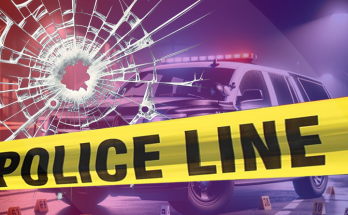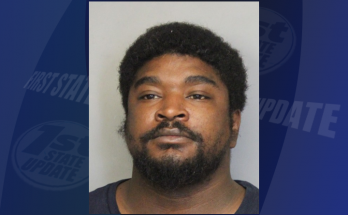
Wilmington – Wilmington Mayor Mike Purzycki today received a preliminary report updating him on the work of the 11-member Baynard Stadium Working Group, which he appointed on March 30. The report addresses the future use, maintenance and management of the City’s Baynard Stadium sports facility in West 18th Street.
The report’s five options explore various ways to complete needed repairs or pay for additional construction for the 95-year old stadium, as well as ongoing annual maintenance costs, and costs related to the management of the facility. The five options in summary are:
Maintaining the status quo which is expected to lead to the eventual physical demise of the stadium
An cash investment of approximately $12.6 million by the State of Delaware
Bonded financing by Wilmington that would cost the City $18.4 million
Bonded financing and operational funding by Wilmington that would cost the City $22.2 million
A public and private partnership that would secure the stadium’s future and is likely to involve minimal expenditures on the part of the City
On Monday at 7 p.m., the group will hold a public meeting at Warner Elementary School on West 18th Street. Pertinent information from that meeting will be incorporated into a final report for the Mayor. Group members include:
Desmond Baker – Principal, Desmond Baker & Associates
Raymond Bivens – Delaware State Director of Parks and Recreation
Nnamdi Chukwuocha – Wilmington City Council Member, 1st District
Ernest “Trippi” Congo – Wilmington City Council Member, 2nd District
Demetrius DeRamus Sr. – Youth Football Coach/Organizer, Laborers International Union of North America
Charles “Bud” Freel – Wilmington City Council Member, 8th District
Earl Jeter – Principal, Jeter and Johnson, LLC
Kevin Kelley – Wilmington Director of Parks and Recreation (Chair)
Karla Levinson – Attorney , The Levinson Firm and a resident of the Triangle Community
Tom Ogden – Deputy Chief of Staff, Mayor’s Office
Charles Potter – State Representative, 1st District
Here are the five options as developed by the Working Group:
OPTION 1: Status Quo – City Ownership, State Operations, No New Funding
Fiscal Impact to the City of Wilmington: $0
Maintaining the status quo generates no new costs associated with operations or capital funding. However, repairs are absolutely necessary as demonstrated by the condemnation of the south bleachers in 2016. There are risks associated with Baynard Stadium that are heightened by the location’s current state of disrepair; namely, but not limited to, property risk from damage or collapse, and general liability risk should someone become injured. The State of Delaware has a statutory tort cap of $300,000, and the City currently has a general liability excess coverage limit of $750,000.
While the north side stands, for example, have been given passing marks by the State, there are a number of growing concerns that these stands will eventually require either replacement or significant repairs. The most recent engineering analysis only gave a two-year window of approval for the continued use of the north stands. In the event that DNREC, for safety reasons, has to condemn the north side stands, Baynard Stadium would no longer have sufficient seating to practically provide a quality high school football facility, thereby resulting in a decrease in the already limited operational revenue that the stadium collects, as well as inability for the stadium to continue to serve many of the central athletic functions that has been the background of its operations for almost a century. The south side bleachers, which were recently condemned and replaced with temporary bleachers, seat far fewer people.
The overall current physical layout of Baynard Stadium limits its potential uses and therefore revenue streams. First, the track that encircles the football field was originally installed in 1998. Given the average estimated lifespan of 15-20 years, the track is now reaching the end of its usefulness, and is now facing drainage problems, cracks from tree roots, and significant wear in certain locations. Additionally, despite the current standard for modern tracks being eight track lanes, the track at Baynard stadium has only six. Second, the pedestrian entry gate to the stadium is located just off the intersection of W. 18th Street & Stadium Drive, forcing visitors to the stadium to walk in the vehicular roadway, as well as cross the primary entry roadway to reach that gate. Third, there are no changing areas/showers available for referees working at the stadium. Fourth, there are various portions of the stadium and facility that were constructed prior to accessibility standards being adopted and are therefore currently not in compliance with accessibility standards. Finally, since the stadium was primarily designed to serve as a football field, the playing field’s current dimensions do not create an environment where other sports such as soccer and lacrosse can easily be accommodated.
The field at Baynard Stadium currently consists of a natural turf surface. In order to appropriately maintain and sustain the natural grass field, the number of games using the field each year has is limited by DNREC staff. This natural turf is affected by compaction from play, the digging from cleats, and the weather conditions occurring throughout the year, and without a limitation on its usage, the field would quickly be damaged beyond the point where it could be utilized as a playing surface. Regular and intensive operational management by DNREC staff is necessary to maintain this natural turf.
Given the field surface that is currently used and the necessary restrictions on usage, the potential for higher revenue streams at Baynard Stadium is limited. Over the last five years the stadium has averaged approximately $45,000 in revenue (largely from event fees), while the operational costs for the same time period hover at approximately $150,000 (2/3 of which is related to personnel). DNREC leadership, as well as park management, has confirmed that the stadium has never been profitable during the almost twenty years of DNREC’s oversight, due in part to the scheduling limitations that the grass field presents and the current fee structure. Without changes to either the field surface and/or the current fee structure, it will be difficult for DNREC to significantly increase its current annual revenue amounts.
The parking availability and traffic patterns at the facility have also proven inadequate in handling of vehicular traffic. The primary entrance road to the parking lot next to the stadium has no shoulders, which can cause significant problems relating to ingress/egress. The portions of the facility’s road network that have asphalt surfaces are in need of resurfacing, and the areas of that network that have grass/gravel surfaces suffer from drainage problems and poor grading. Furthermore, the facility continues to not have sufficient parking to support the numbers of visitors to the stadium. Despite the large number of evening/night events held at the stadium, there is not lighting in any of the on-site parking areas. Finally, access for emergency service vehicles to both the field and the overall site is limited by the existing road network.
Both the restrooms and locker rooms available at the stadium are inadequate in accommodating the size of the crowds that routinely use the stadium. While still in use and largely functional, the inadequate size of these resources have resulted in temporary portable restrooms being used for certain events. Additionally, the locker rooms are usually too small to accommodate the size of the teams that are using them. There is only one toilet per locker room, and that stall is not private. Finally, the showers located in the locker rooms are not currently functional.
The aforementioned condition descriptions represent the current status quo of the capital components of Baynard Stadium. While many of these components are still functional, as result of their age, design, and limitations in size, they are not providing adequate access and service that are expected at this type of facility.
OPTION 2: City Ownership, State Operations, Significant New State Capital Funding
Fiscal Impact to the City of Wilmington: $0
Option 2 continues with the status quo for obligations to the City, assuming all new capital costs will be picked up by the state. The result is no new costs to the City. In the event that repairs are completed there is an expectation that several of the risks associated with Baynard Stadium will be reduced.
Since the State of Delaware acquired management responsibilities for the stadium in the late 1990s, DNREC has consistently utilized capital funding, largely from its own capital allocation, to address relatively small-dollar capital issues confronting the stadium. No DNREC-funded capital project relating to the stadium has cost more than $88,000 since 2000, with the exception of the most recent $200,000 expenditure in 2016 for the temporary stands on the south side of the stadium. In that instance, the funding was acquired not from DNREC’s own capital budget but rather directly from the state legislature via the annual bond bill.
The annual capital rehabilitation budget of the Division of Parks over the last 9 years has average approx. $1.6 million. That capital budget must serve the capital needs of not only all state parks and but also all nature preserves. This limited pool of funding must address capital issues throughout the state’s entire park system. Including the costs of the renovation of Baynard Stadium, the Division of Parks has a standing capital backlog of approximately $30,000,000 just for Wilmington State Parks.
Another possible source of state funding would be the State’s annual bond bill legislation. While an allocation from the bond bill could be placed in a variety of places, the logical location for the funding would be DNREC, given its current operational responsibilities. In the final version of the FY17 state bond bill, Parks received approximately $2.5 million for capital rehab funding. Assuming Parks receives this same level in the final version of FY18 bond bill, that amount would not be nearly enough to cover the full capital constructions costs for Baynard Stadium. If one were to add up all of the capital rehabilitation funding for parks statewide from FY 2013 to FY 2017, Parks received only $11.6 million.
Given DNREC’s historically limited and decreasing capital funding stream, the estimated costs of replacing any number of the significant physical pieces that make up Baynard Stadium, the growing capital backlog that the Division of Parks faces not only in Wilmington State Parks but across the state park system, and the decreased overall DNREC bond bill request in FY18, it is highly unlikely that DNREC or the state legislature will be able to provide the necessary funding in the near future to replace any significant part of the stadium, if and when such a cost arise, absent a dramatic reversal of past state budgeting trends. With a current projected state budget deficit of just under $400 million, significant additional state funding is unlikely to materialize.
OPTION 3: City Ownership, State Operations, Significant New City Capital Funding
Fiscal Impact to the City of Wilmington: $18.4 million ($920,391 in additional debt service annually for 20 years)
Option 3 assumes that the City retains ownership and that the State continues in its present role of operating and maintaining the facility. In this option, the City finances a substantial capital infusion of over $12.8 million to completely renovate and expand the stadium facilities and field. Sub-option 3A assumes a one-time capital borrowing, while sub-option 3B assumes the capital borrowing is spread equally over two years, with $6.4 million borrowed each year. The tables below show the fiscal impact to the City.
This option would require the City to either find cuts in current capital funding efforts for other areas of municipal operations to offset the new capital costs for the stadium, or absorb a significant increase in its annual operating budgets over the next twenty years to cover the debt service payments related to an increase in overall borrowing. Absent additional revenues from an increased tax base or heightened tax rates/fees, the City would need to find additional cuts in its current and future operating budgets equal to the highlighted debt service amounts shown below. Furthermore, using significant bond funding for the construction/repairs of an athletic municipal stadium would almost certainly be viewed negatively by the bond rating agencies. Lastly, while current DNREC operational costs associated with Baynard Stadium were used for the following analysis tables, it is likely that the replacement of a grass field with turf would increase annual operational costs due to the maintenance this new surface and the almost certain increase in field usage.
OPTION 4: City Ownership, City Operations, Significant New City Capital Funding
Fiscal Impact to the City of Wilmington: $22.2 million ($1,111,645 annually for 20 years which equals $920,391 in annual debt service and $191,255 in net operational loss)
Option 4 assumes that the City retains ownership and takes over the role of operating and maintaining the facility from the State. Sub-option 4A assumes a one-time capital borrowing of $12.8 million, while sub-option 4B assumes the capital borrowing is spread equally over two years, with $6.4 million borrowed each year. In addition, the costs to the City of operating the facility, along with the offsetting revenue obtained from event and concession fees are considered. The tables below show the fiscal impact to the City.
This option would require the City to either find cuts in current capital funding efforts for other areas of municipal operations to offset the new capital costs for the stadium, or absorb a significant increase in its annual operating budgets over the next twenty years to cover the debt service payments related to an increase in overall borrowing, as well as the additional net operational loss. Absent additional revenues from an increased tax base or heightened tax rates/fees, the City would need to find additional cuts in its current and future operating budgets equal to the debt service and the net operational loss shown below. Furthermore, using significant bond funding for the construction/repairs of an athletic municipal stadium would almost certainly be viewed negatively by the bond rating agencies. Lastly, while current DNREC operational costs associated with Baynard Stadium were used for the following analysis tables, it is likely that the replacement of a grass field with turf would increase annual operational costs due to the maintenance this new surface and the almost certain increase in field usage. This option assumes no changes to the current structure for revenues and expenditures.
OPTION 5: Public Private Partnership – City Ownership, Private Operations, Private Capital Funding
Fiscal Impact to the City of Wilmington: To be determined, but anticipated to be minimal
Under this option, the City may choose to pursue a Request for Proposal or Letter of Interest from the private/nonprofit sectors to gauge the level of interest that such entities may have in making a significant capital investment (investment amount based partly on the cost estimates the City has received thus far, as well as the specific capital improvements determined as necessary to the future operations of the facility) and to have day-to-day operational responsibilities.
Should the City choose to pursue a public-private partnership model, issues/conditions that could be addressed in an RFP may include (but would not necessarily be limited to):
a long-term lease for operational responsibilities of Baynard Stadium, provided certain commitments of capital investment into the stadium were made by the private entity access for all current users at fee rates reasonably close to current fees charged by DNREC, with calendar access similar to current field usage access to use the field’s concessions facilities for groups that rely on such sales for their organization’s financial stability responsible degree of City oversight over the entity that would be tasked with regular operational duties continued ownership of the property by the City reasonable field access for youth athletic leagues at times that logically fit the needs of the youth groups
History
Baynard Stadium was opened in 1922 after the land was donated by Samuel H. Baynard, President of the Board of Park Commissioners at the time. The facility, located on West 18th Street in Brandywine Park, is currently owned by the City of Wilmington but the daily operations are managed by the Division of Parks and Recreation in the Delaware Department of Natural Resources and Environmental Control (DNREC). The stadium originally opened as two baseball fields with a bandstand. Major renovations were completed in 1956, increasing the seating capacity to 3,000. Other improvements that year included the addition of lights, a scoreboard, press box, field house, locker rooms, a new track, and field upgrades. The last substantial upgrade, the addition of aluminum stands, was completed in 1972.
Prior to 1969, the City of Wilmington was responsible for the operations of Baynard Stadium, as well as Brandywine Park, Rockford Park, Brandywine Zoo, and Kentmere Parkway (park system). In 1969, New Castle County (NCC) entered into a 40-year lease agreement with the City. The agreement allowed the City to maintain ownership of the land while NCC took over all operations of the aforementioned parks. The contract with NCC was terminated prematurely in 1998 when the State passed legislation (The Fiscal Year 1998 Appropriation Act – House Bill No. 375, Section 42) establishing the Wilmington State Parks, and DNREC assumed all operational authority over the park system.
Source: Wilmington Mayor’s Office





